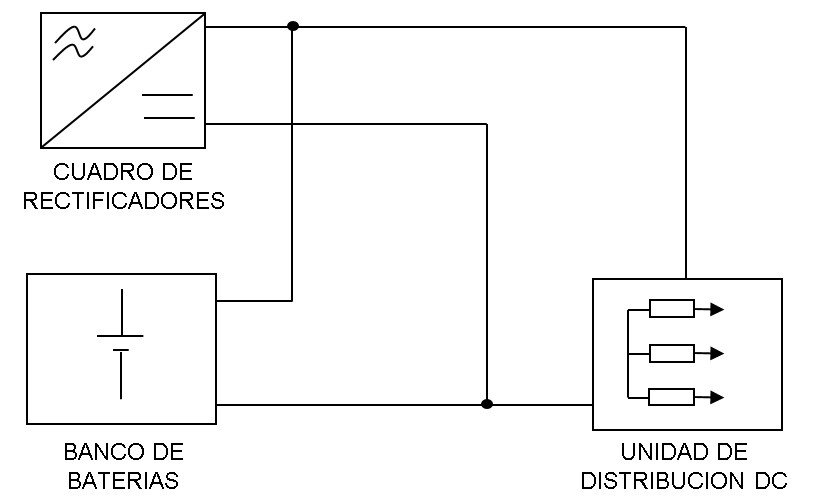Sistemas de Energía DC/AC
Parts of the DC power distribution panel for telecommunications. Part 3
In this article, we continue describing the components of the DC power distribution panel for telecommunications. We also invite you to read the posts that are already published on our website energydcac where we describe other components of this equipment. Don’t miss out!
Here, we will analyze the DC Battery Module and Low Voltage Disconnect (LVD). Both of which are of great importance as backup systems and for extending battery lifespan. Let’s get started.
DC Battery Module of the DC power distribution panel

The DC Battery Module is a component of the DC power distribution panel for telecommunications that ensures the batteries fulfill. Their mission of providing backup power for telecommunications in the event of any failure that disables the rectifiers.
Physically, this module is located at the bottom of the power distribution panel and features several trays for placing industrial batteries. Which must be AGM or valve-regulated models due to the available dimensions.
Within this space, there is circuitry that reports to the Control Module, which manages the energy in telecommunications systems within the power distribution panel.
The Control Module allows for the management of various variables related to these elements, such as float voltage, supplied current, voltage levels and others.
Additionally, the DC Battery Module connects to power bars with fuse-type protections to ensure instantaneous entry into the system when needed. To the extent that connected equipment doesn’t perceive the change.
These modules also include a switch or breaker controlled by a circuit with the initials LVD, which will be discussed later.
All of the above enables the assessment of battery status and ensures their integrity, guaranteeing operational readiness when required.
Typically, depending on whether the power distribution panel belongs to a mobile or fixed telephony system. Considering other factors like projected autonomy time, this Battery Module can accommodate 2 or 3 battery banks.
In our upcoming article titled Batteries and Their General Aspects, we explain all the features and parameters of this equipment. So you can have a clear understanding of the concepts we discussed here.
¿What is LVD?
LVD, which stands for “Low Voltage Disconnect,” is a system that prevents batteries from undergoing deep discharges that can be damaging. It achieves this through an automatic disconnect and reconnect switch or breaker.
This is because when the rectifiers are turned off, the batteries begin to supply the necessary energy to the equipment connected to the system.
Over time, the batteries deplete their reserve power, which is reflected in their decreasing voltage level. If this value becomes too low, it can cause damage and reduce battery lifespan.
This is why the Low Voltage Disconnect (LVD) system is necessary. It is programmed to issue a disconnect command to the batteries when their voltage reaches a predetermined value.
Typically around 46 Vdc in fixed telecommunications energy systems. For mobile telecommunications, the LVD is set to activate when the battery bank reaches around 22 Vdc.
Once these voltage levels are reached, the load is disconnected, suspending the telecommunications service.
However, it’s important to note that this occurs several hours after the fault starts. When the commercial power is not restored and if the location doesn’t have a backup generator.
In our post about the design criteria for a telecommunications energy system, we will explain the best practices that the energy system must follow regarding backup times.
You are invited to acquire our DC Power Systems Sizing and Design Course for Telecommunications and Critical Systems. In this course, we provide you with all the necessary information to properly design with this equipment.
You can view the course content by clicking here.
Furthermore, we will continue with this topic in the article titled Power Distribution Panel: The DC Distribution Module that we are currently preparing. Stay tuned!
Image sources
- benning.de
- energydcac.com

